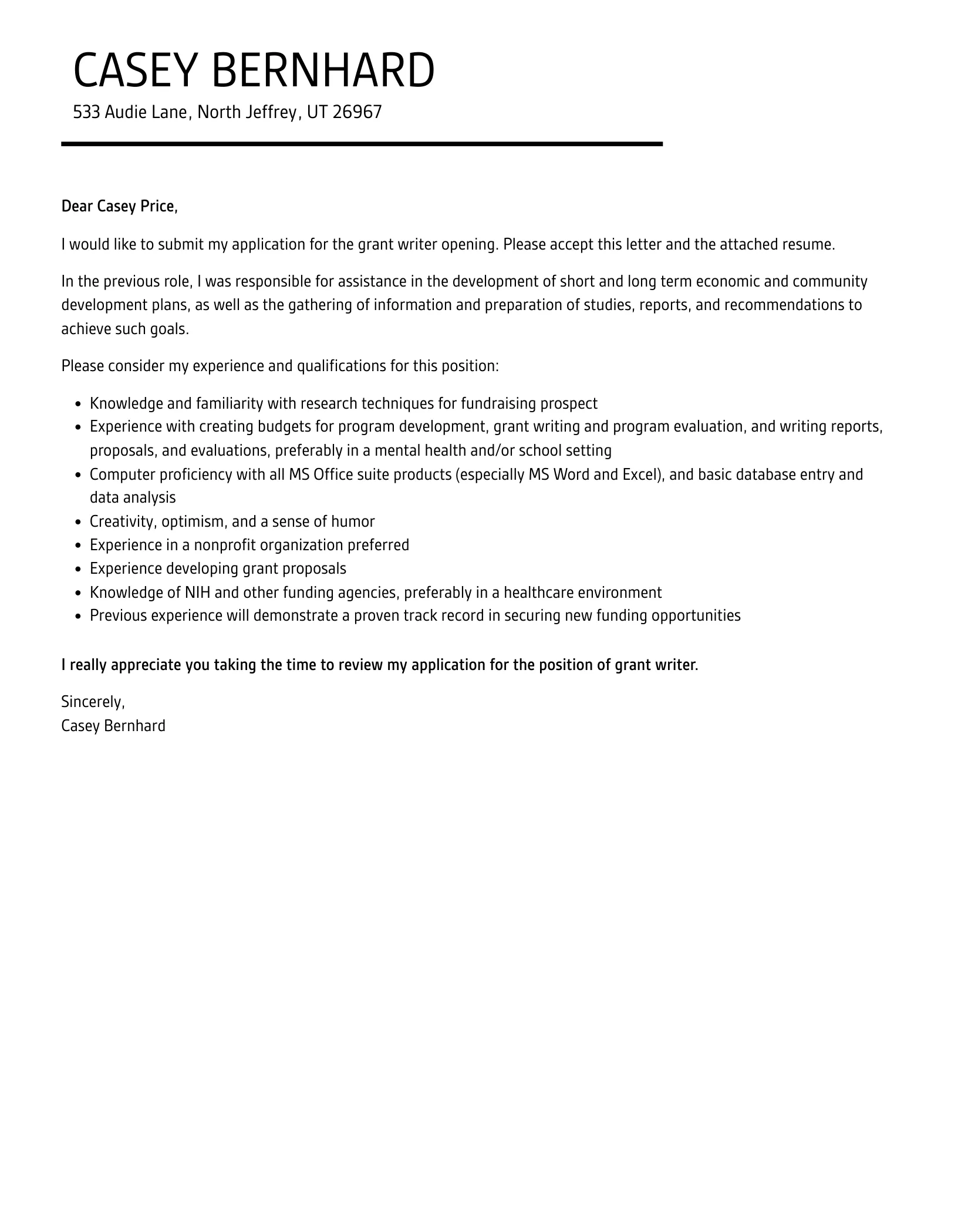Understanding the Cover Letter Grant Writer Role
A cover letter for a grant writer position is more than just a formality its your first chance to impress a potential employer or client and secure an interview. It serves as your introduction, showcasing your qualifications, passion for grant writing, and understanding of the specific organization or funding opportunity. A well-crafted cover letter demonstrates your ability to communicate effectively, highlight relevant skills, and present yourself as the ideal candidate for the role. This document should be a compelling narrative that complements your resume and encourages the reader to learn more about you.
Essential Components of a Cover Letter
Every cover letter, especially those targeting grant writer roles, shares a core structure. This structure helps you present your information clearly and effectively. Adhering to these components shows professionalism and attention to detail – critical attributes for a grant writer. Each section is important and must be carefully considered to maximize its impact. Let’s break down each essential element to make sure your letter stands out and helps you achieve your goals.
Contact Information and Date
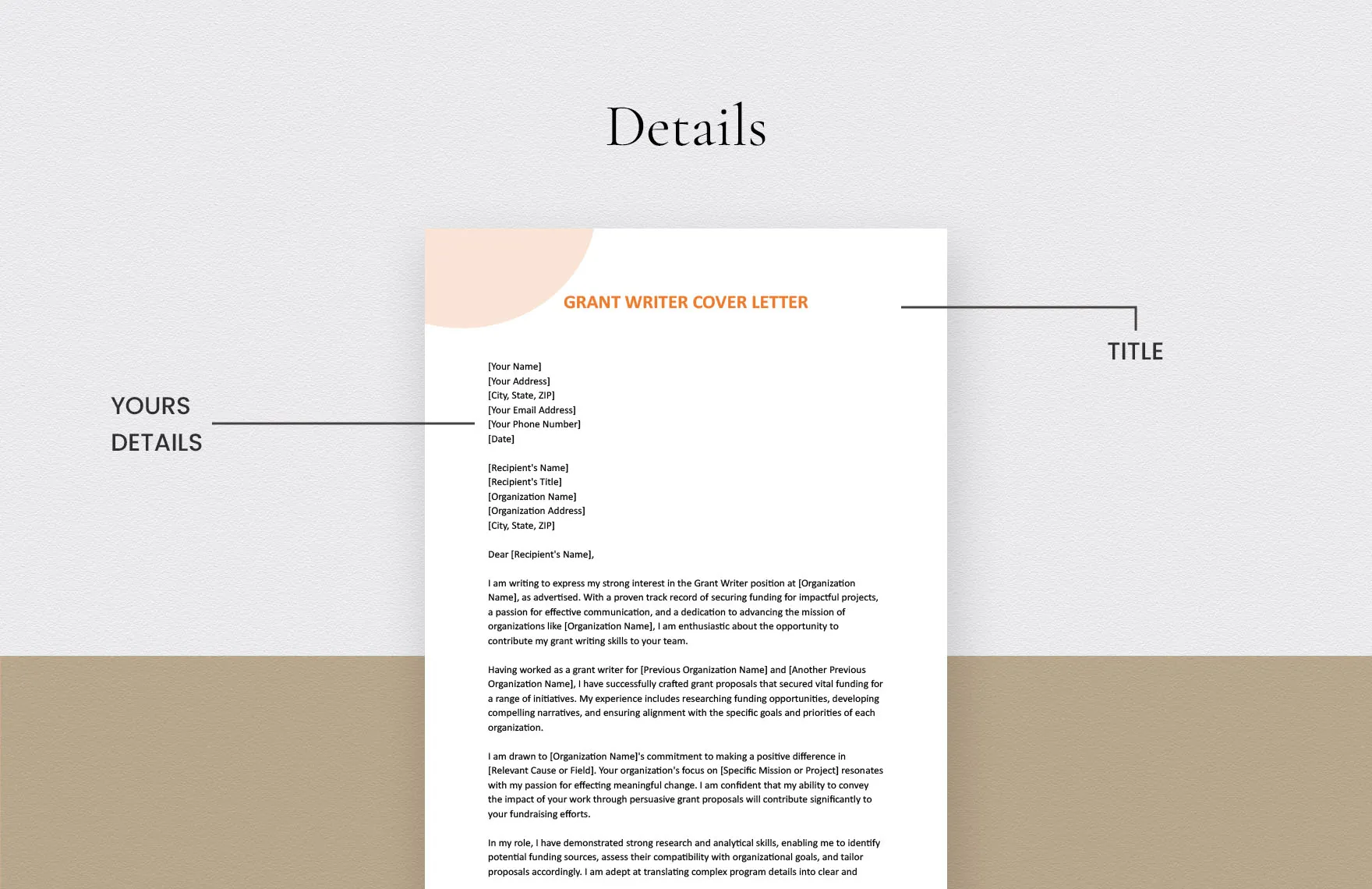
At the top of your cover letter, include your full name, address, phone number, and professional email address. This information ensures the recipient can easily reach you. Below your contact details, include the date you are submitting the cover letter. Ensure the date is formatted correctly and corresponds to the day you are sending the application.
The Salutation
Address the recipient correctly. Ideally, you will use the hiring manager’s name; this shows you have done your research. If you don’t know the name, use a professional salutation like “Dear Hiring Manager” or “Dear [Department Name] Team.” Avoid generic greetings like “To Whom It May Concern”.
Crafting a Compelling Opening
The opening paragraph is your chance to grab the reader’s attention. Start with a strong statement that highlights your interest in the position and the organization. You might mention where you saw the job posting or how you learned about the organization’s mission. Briefly state your most relevant qualifications and why you are a great fit. Your opening should be concise, engaging, and set the tone for the rest of your letter. It should immediately convey enthusiasm and demonstrate your understanding of the organization’s needs.
Highlighting Your Skills and Experience

This section is the heart of your cover letter where you showcase your grant writing expertise. Focus on the skills and experiences that directly relate to the job requirements. Use specific examples to illustrate your accomplishments. Mention successful grant applications you have written and the funding amounts you’ve secured. Emphasize your knowledge of grant research, proposal writing, budgeting, and reporting. Tailor your examples to the specific requirements listed in the job description to make sure you demonstrate a strong understanding of the role’s requirements.
Quantifying Your Achievements
Whenever possible, quantify your achievements with numbers and data. Instead of saying “secured funding,” state “secured over $500,000 in grant funding for various projects.” This provides concrete evidence of your success. Use percentages to show improvements. This quantifiable information helps the reader understand the impact of your work and provides solid proof of your capabilities.
Showcasing Relevant Experience
Detail your experience in grant writing. Mention the types of grants you have experience with (e.g., federal, state, foundation grants). Describe the types of organizations you have worked with (e.g., nonprofits, educational institutions, government agencies). Include the specific roles you have held (e.g., grant writer, grant manager, development officer) and the key responsibilities associated with each role. Showcasing relevant experience proves you have successfully navigated the grant-writing landscape and are prepared to contribute immediately.
Demonstrating Understanding of the Grant
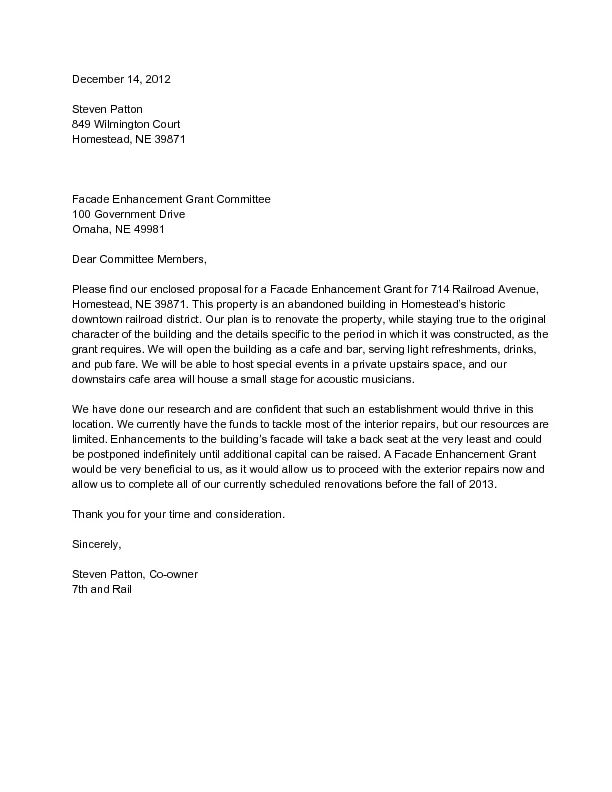
This section demonstrates your understanding of the funding landscape. Mention the types of grants you’ve experience with and show that you know the funder’s priorities. The goal is to prove you are not just a writer but also a strategist. Your understanding of these details will set you apart from other applicants.
Tailoring to the Specific Grant
Customize your cover letter for each grant application. Research the funder and the specific grant opportunity. Explain how your skills and experience align with the funder’s goals and priorities. Highlight any previous grants you have written for similar purposes. Demonstrating this level of detail shows that you care about the specific opportunity.
Addressing the Funders Needs
Show how you understand the needs of the funder and explain how your skills can contribute to the funder’s mission. For example, if the funder prioritizes community impact, highlight your experience with community-based projects and your ability to articulate the project’s value to the community. By addressing the funder’s needs, you prove you’re not just qualified but are also aligned with their values.
Writing a Powerful Closing

The closing paragraph is your final chance to make a lasting impression. Summarize your key qualifications and reiterate your interest in the position. Express your enthusiasm for the opportunity and your eagerness to contribute to the organization. Make sure to include a call to action, urging the reader to contact you for an interview. Your closing should be professional, concise, and leave a positive impression.
Expressing Enthusiasm and Gratitude
Show your enthusiasm by expressing your sincere interest in the role and the organization. Thank the reader for their time and consideration. Use phrases like “I am very excited about the opportunity to…” or “Thank you for reviewing my application.” This shows you are genuinely interested and grateful for the chance to be considered.
Call to Action
End your cover letter with a clear call to action. Invite the reader to contact you for an interview or to discuss your qualifications further. Provide your phone number and email address again. Make it easy for the reader to take the next step. For example, you might say “I am eager to discuss how I can contribute to your team. I am available for an interview at your earliest convenience. You can reach me at [phone number] or [email address].”
Proofreading and Formatting
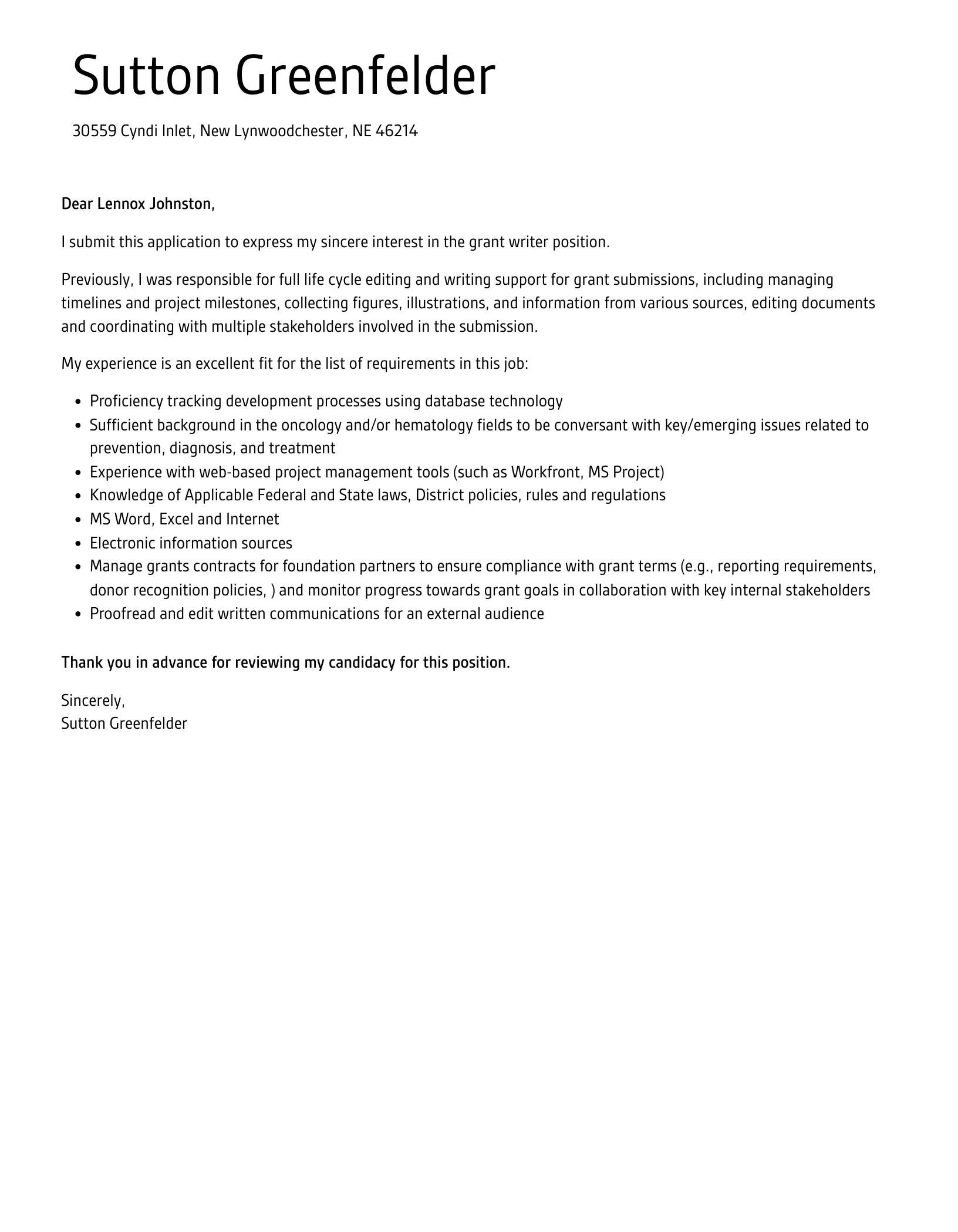
Before submitting your cover letter, carefully proofread it for any errors. Check for grammatical errors, typos, and inconsistencies. Ask a friend or colleague to review it as well. Pay attention to the formatting. Use a professional font, such as Times New Roman or Arial, with a standard font size (11 or 12 points). Use clear, concise language and avoid jargon. Ensure the cover letter is easy to read and visually appealing. A well-formatted and error-free cover letter demonstrates professionalism and attention to detail.
Common Mistakes to Avoid
Several common mistakes can undermine your cover letter. Avoid generic cover letters that are not tailored to the specific job or organization. Don’t repeat information from your resume. Avoid using overly formal language or jargon. Do not include negative information about previous employers or experiences. Make sure to address the specific requirements of the job description and highlight your relevant skills. Also, do not exceed the recommended one-page length.
Formatting Best Practices
Adhere to standard formatting guidelines. Use a professional font (Times New Roman, Arial, or Calibri) and a standard font size (11 or 12 points). Use single-spacing within paragraphs and double-spacing between paragraphs. Ensure your cover letter is one page in length, unless otherwise specified. Use a consistent structure, with clear headings and subheadings. Use bullet points to highlight key skills and accomplishments. Make sure your formatting is consistent and visually appealing.
Cover Letter Grant Writer Examples
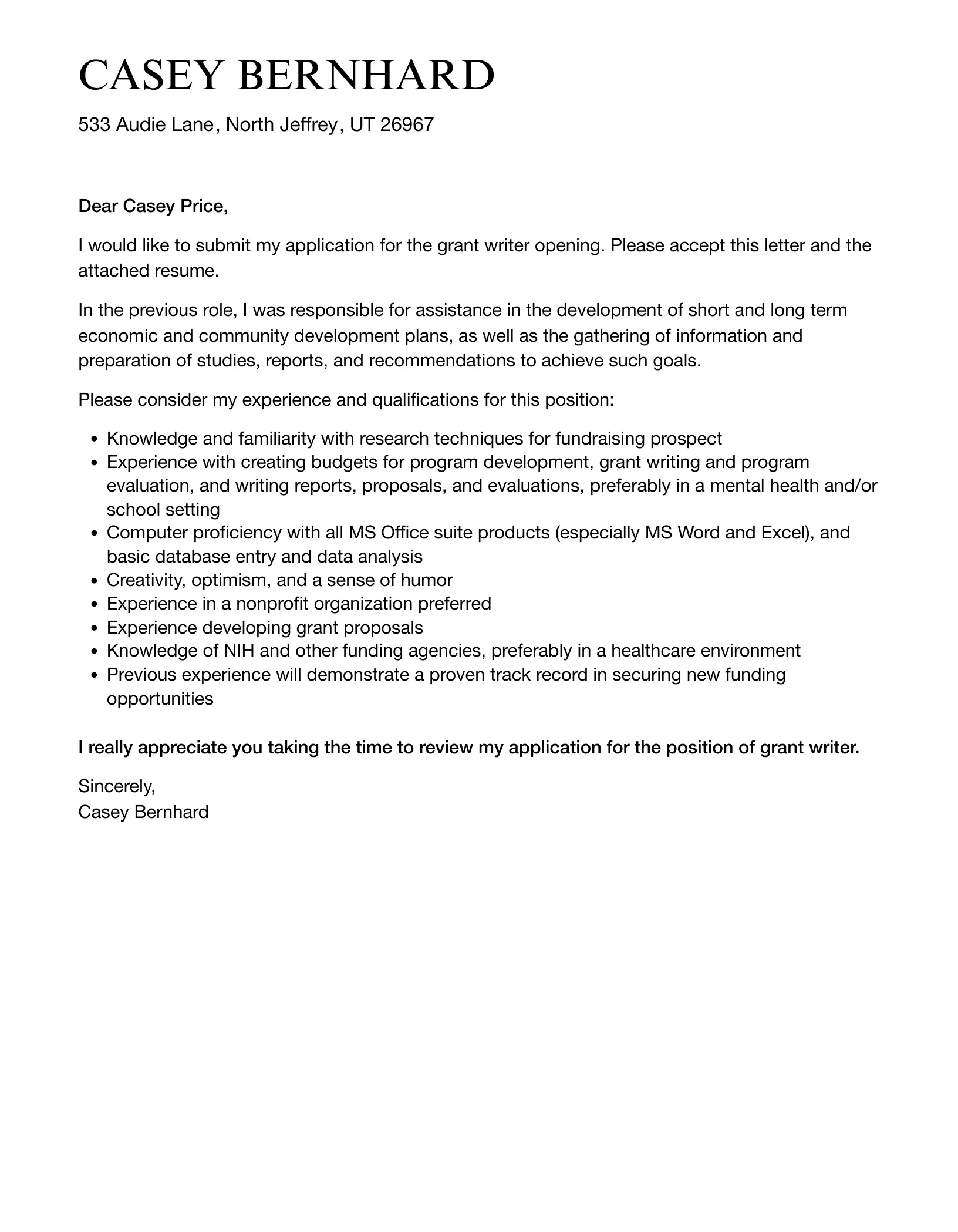
Reviewing examples of successful cover letters can provide valuable insight. Look at examples from reputable sources online and tailor them to fit your experience. Pay close attention to how the writers highlight their skills, quantify their achievements, and demonstrate their understanding of the specific grant opportunities. By studying these examples, you can adapt the best practices to create your own impactful cover letter.
Example Cover Letter for a Grant Writer Position
This is an example of what a good cover letter could be. Adapt this template to your own situation. Remember to include your name, address, phone number, and email. In the salutation, address the hiring manager by name if you know it. In the opening paragraph, express your interest in the position, and state your best skills. In the body paragraphs, highlight your experience and achievements. Quantify them whenever possible, and address the needs of the funder. Make sure to show your enthusiasm and include a clear call to action.
Adapting the Example to Your Situation
Adapt the example cover letter to your specific situation. Customize it based on the job description, the organization, and your individual qualifications. Replace the placeholder information with your own details. Modify the language to reflect your unique voice and personality. Tailoring the example demonstrates that you understand the requirements of the role and are prepared to make a strong case for your candidacy.
